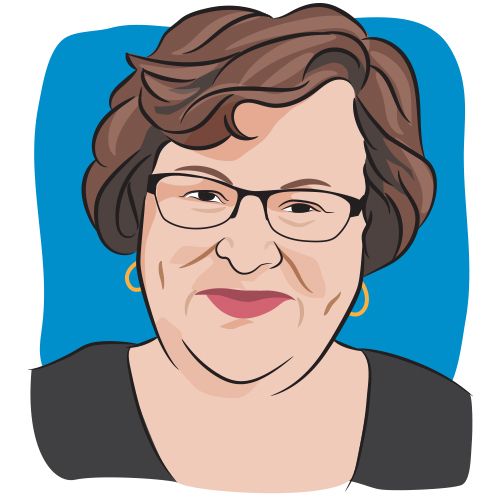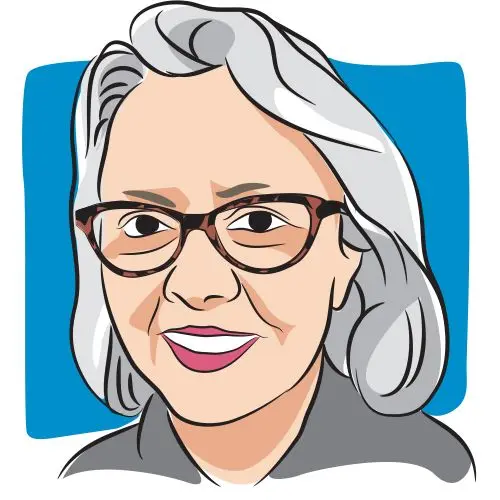Article
Novel Triplet Combination Shows ‘Notable Efficacy in a Challenging to Treat’ Population of Relapsed/Refractory Diffuse Large B-Cell Lymphoma
Author(s):
Treatment with the combination of Polivy, rituximab and lenalidomide safely conferred responses in patients with relapsed/refractory diffuse large B-cell lymphoma, with most patients still in remission at the study’s cutoff date.
Patients with relapsed/refractory diffuse large B-cell lymphoma may have a safe and effective treatment option with the novel triplet combination of Polivy (polatuzumab vedotin), rituximab and lenalidomide, although more research is needed in this area.
“In this first report of a triplet combination of (Polivy), rituximab and lenalidomide, the triplet combination showed notable efficacy in a challenging-to-treat relapsed and refractory diffuse large B-cell lymphoma population,” said Dr. Catherine S.M. Diefenbach, associate professor of medicine, translational director of hematology and director of clinical lymphoma at Perlmutter Cancer Center at NYU Langone Health in New York, during the virtual presentation at the 2021 American Society of Clinical Oncology (ASCO) Annual Meeting.
In this phase 1b/2 trial, researchers analyzed the safety of this combination in 57 patients (median age, 71 years; 67% men) with relapsed/refractory diffuse large B-cell lymphoma, were ineligible for or failed prior autologous stem cell transplantation and were treated with at least one prior anti-CD20-containing chemo-immunotherapy regimen. Efficacy of the treatment was assessed in 49 of the patients in the safety population (median age, 72 years; 63% men).
“The median age was 71, as is typical for this lymphoma, but the age range was from between 28 and 92 years,” Diefenbach said.
Most patients in the safety and efficacy groups (86% and 84%, respectively) had stage 3 to 4 disease, nearly a quarter had two lines of therapy (28% and 27%) and nearly a third had three or more lines of therapy (33% and 31%). In addition, some patients underwent previous CAR-T cell therapy (5% and 6%, respectively) or prior bone marrow transplant (11% and 12%).
Major areas of interest in this study included the safety and tolerability of this triplet combination, in addition to complete response rates (the disappearance of cancer from treatment) at the end of induction as assessed by positron emission tomography scans. Follow-up was conducted for a median of 9.7 months in the safety population and for 9.5 months in the efficacy population.
In the safety population, 75% of patients experienced severe or life-threatening side effects, with the most common including low neutrophils (type of white blood cell) counts (58%), low platelet levels (14%) and infections (14%). Side effects led to 26% of patients undergoing a lenalidomide dose reduction and 67% had treatment interruption. One serious adverse event related to the treatment — neutropenic sepsis (an inflammatory response to a bacterial infection with or without) — was reported.
“The additional (side effects) were not considered related to study drug,” Diefenbach said. “For example, a patient who had a fatal gastric hemorrhage who had been enrolled but not yet treated, and a patient with COVID-19 who contracted this disease 167 days after his last dose of the study therapy.”
In the efficacy population, the overall response rate (percentage of patients with a partial or complete response to treatment) was 39% with a complete response rate of 29%. Ten percent of patients had a partial response. Median progression-free survival (time when a patient with cancer does not have disease worsening) for the entire population was 6.3 months with a median duration of remission of 8.1 months and a median overall survival (time when a patient is alive since receiving a diagnosis or initiated treatment) of 10.9 months.
“However, for the patients who obtained a (complete response) — this is 13 patients — who were evaluable, the median progression-free survival at 9 months had not been reached, nor has the median overall survival,” Diefenbach said. “Nearly all patients remain in complete remission.”
“Additional follow-up is needed to assess the impact of consolidation therapy on the duration of long-term response,” Diefenbach said. “In summary, the triplet combination of (Polivy), rituximab and lenalidomide represents a potential novel regimen for patients with transplant-ineligible relapsed and refractory diffuse large B-cell lymphoma and is worthy of further study.”
For more news on cancer updates, research and education, don’t forget to subscribe to CURE®’s newsletters here.




